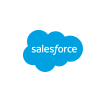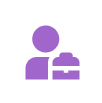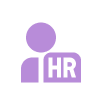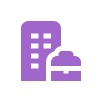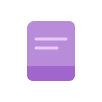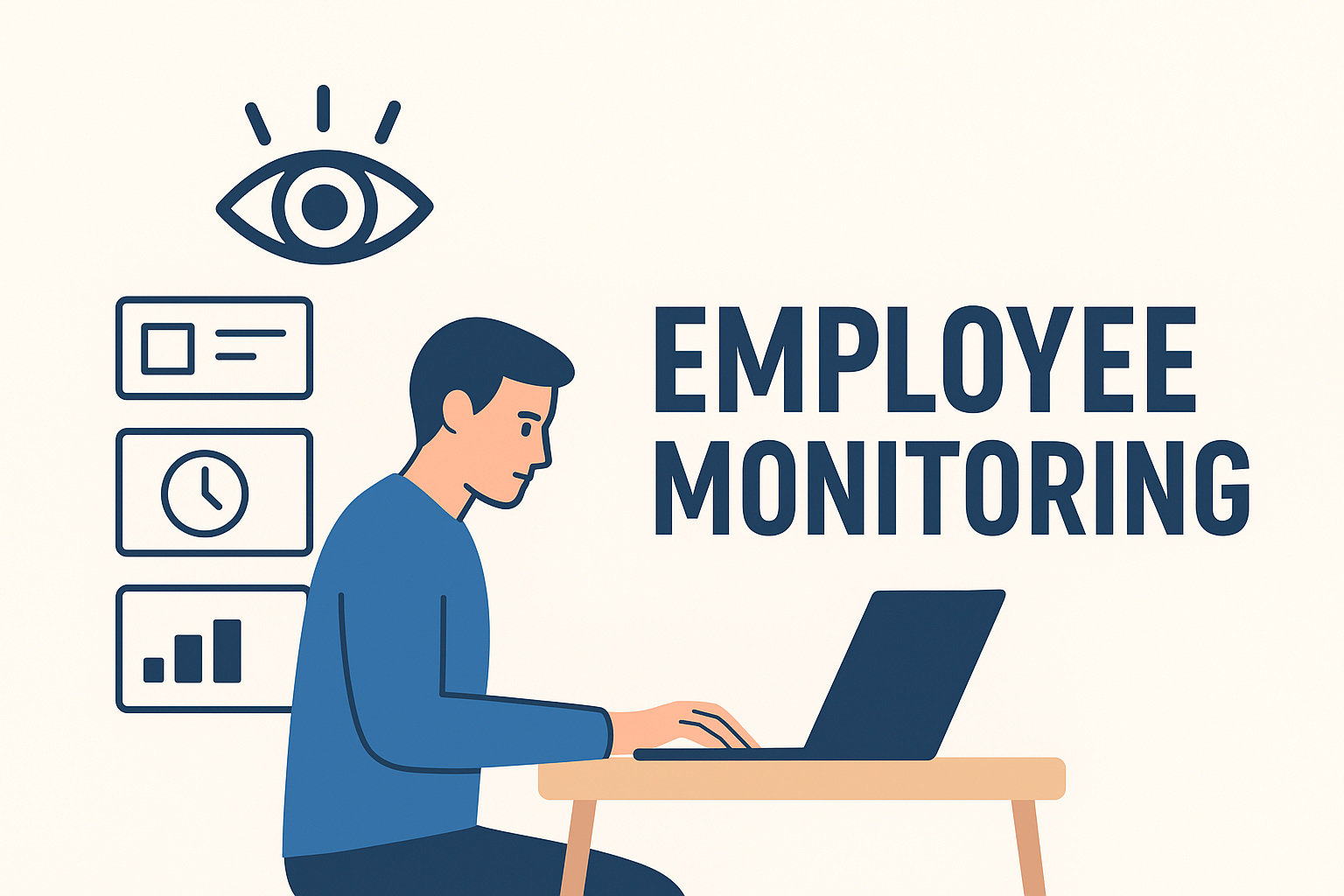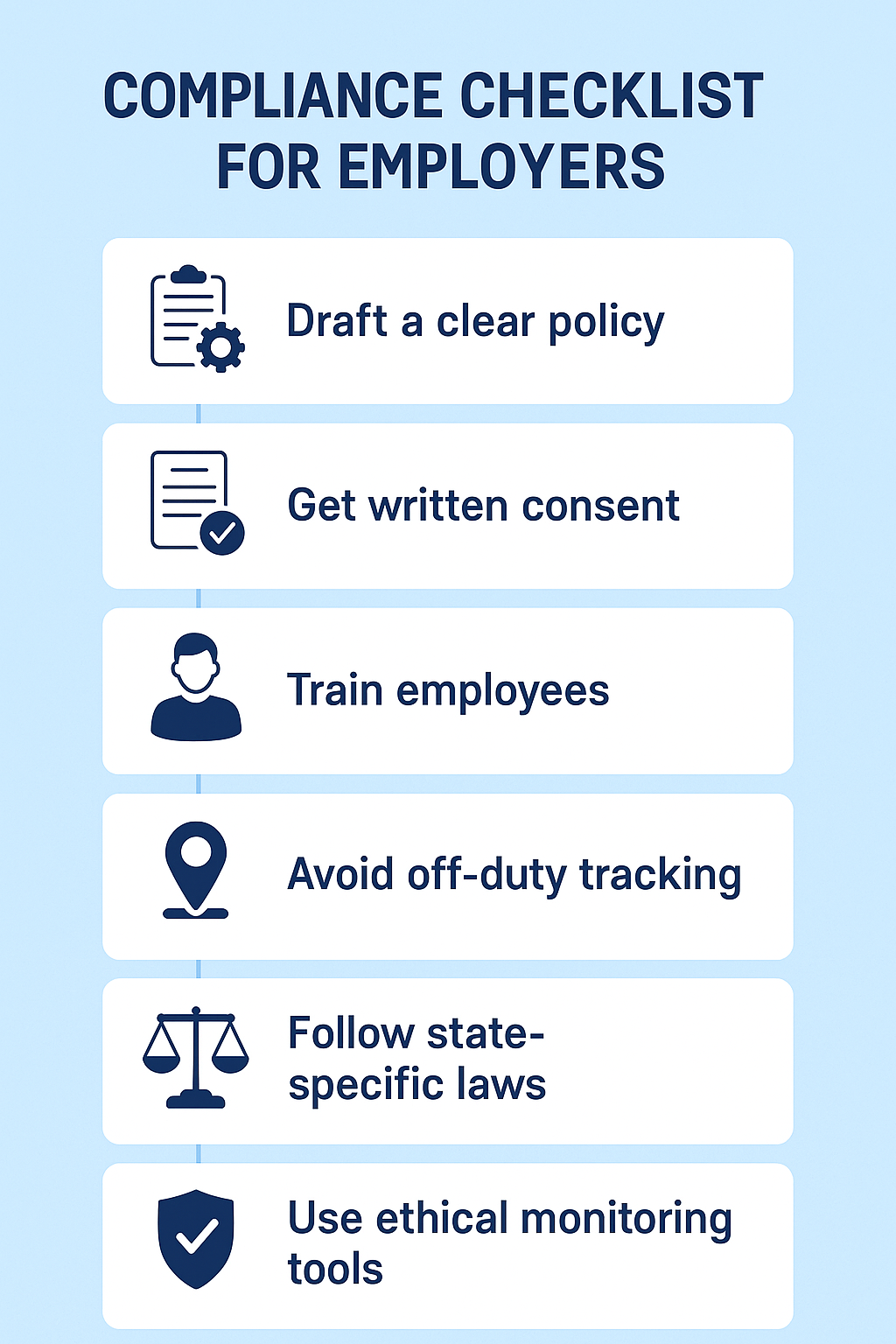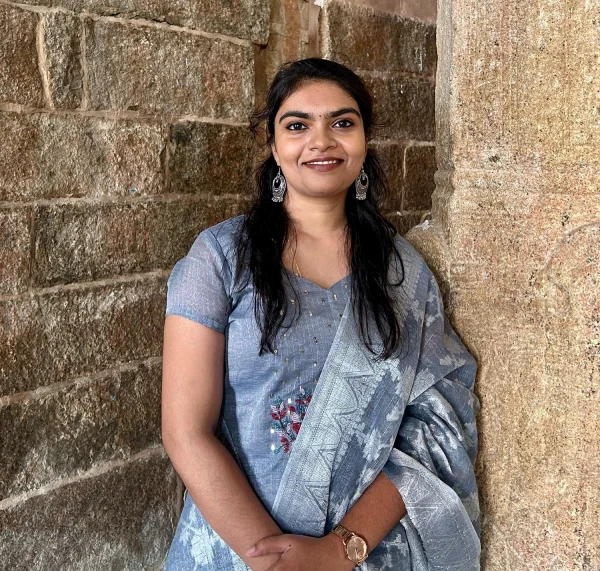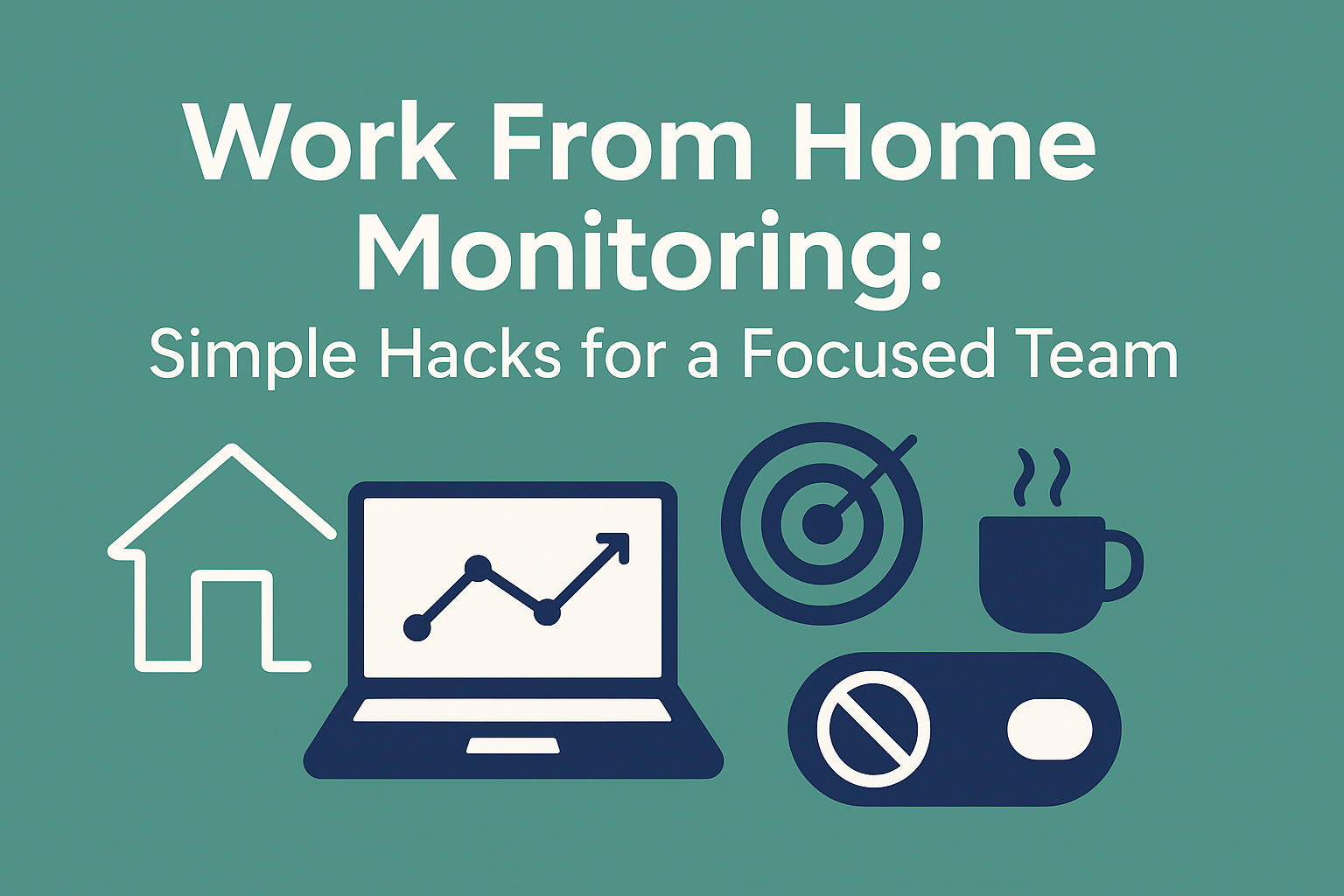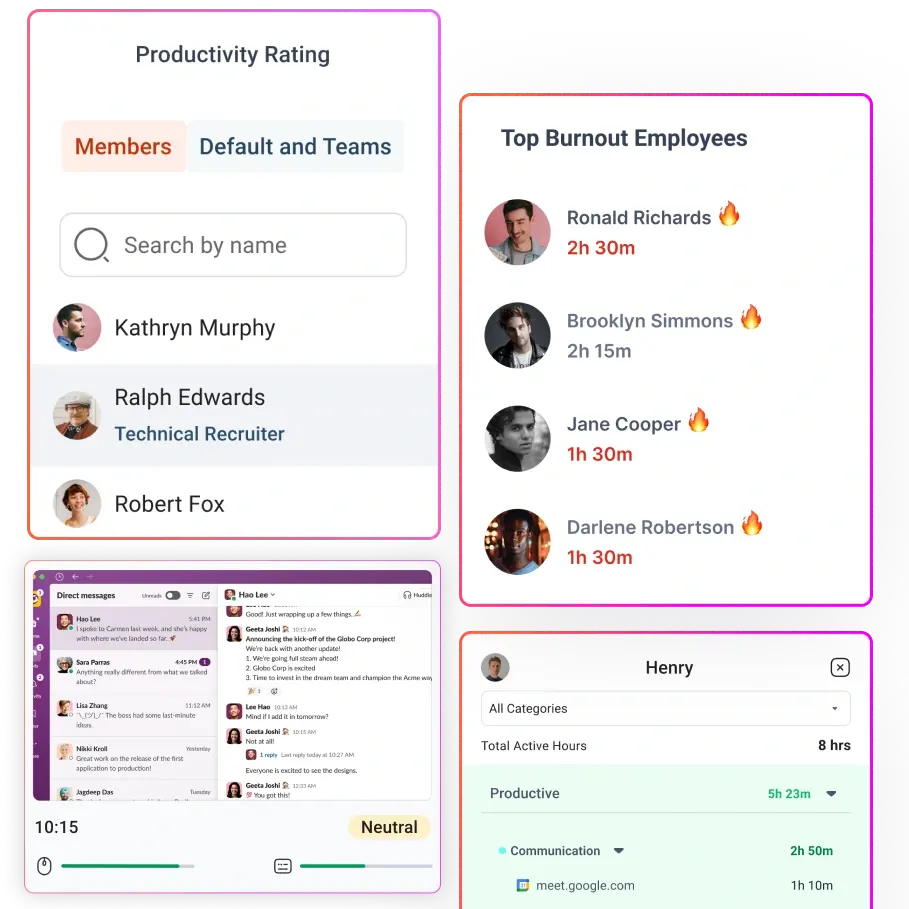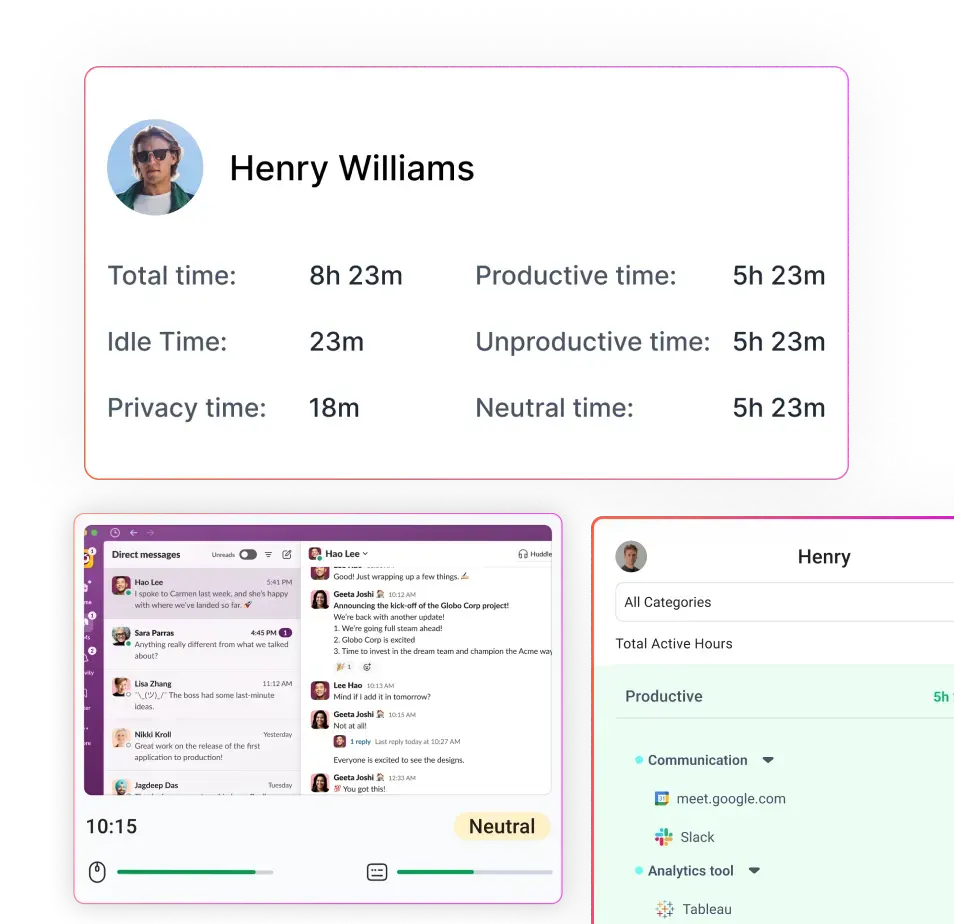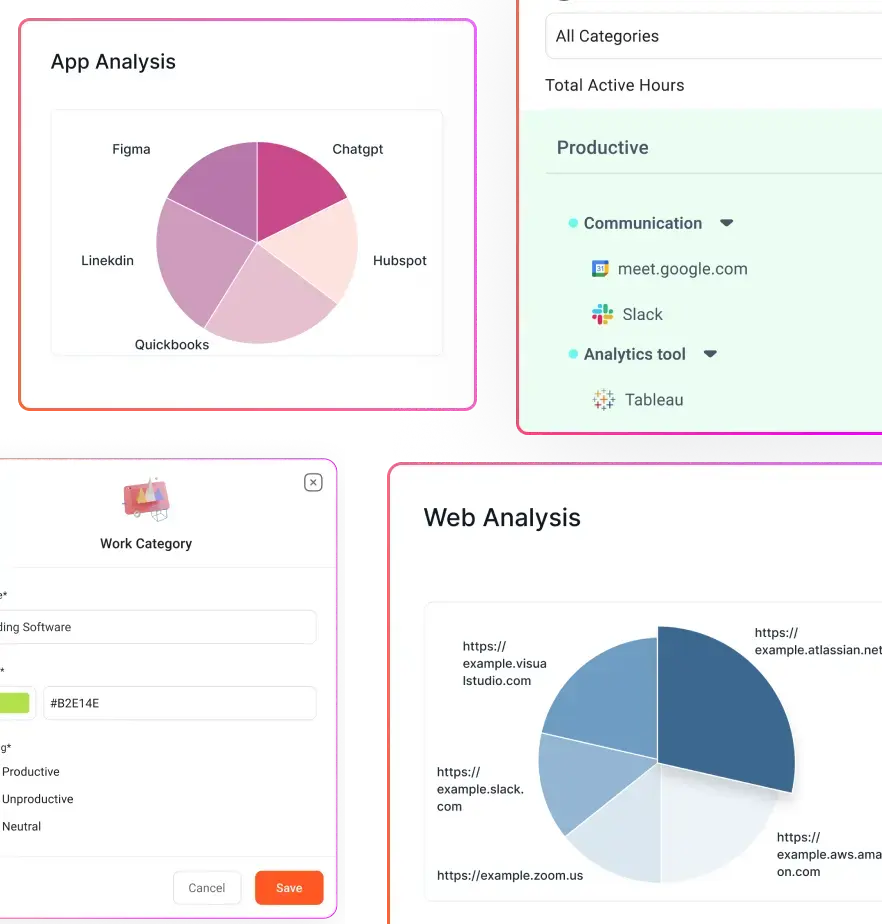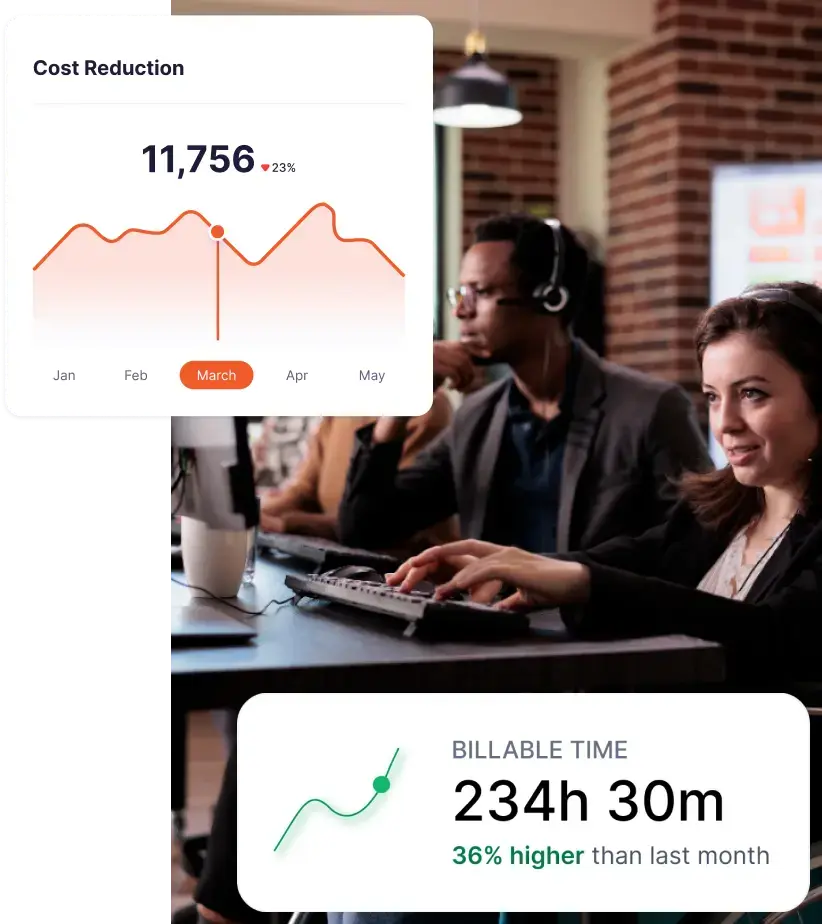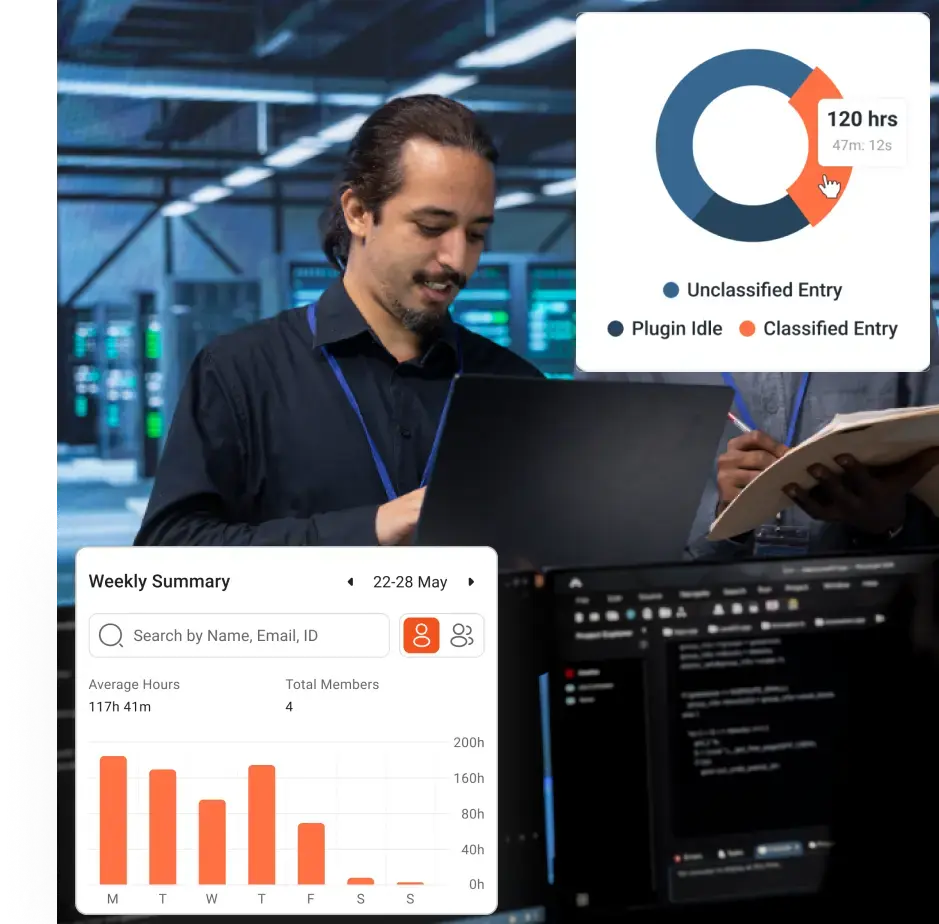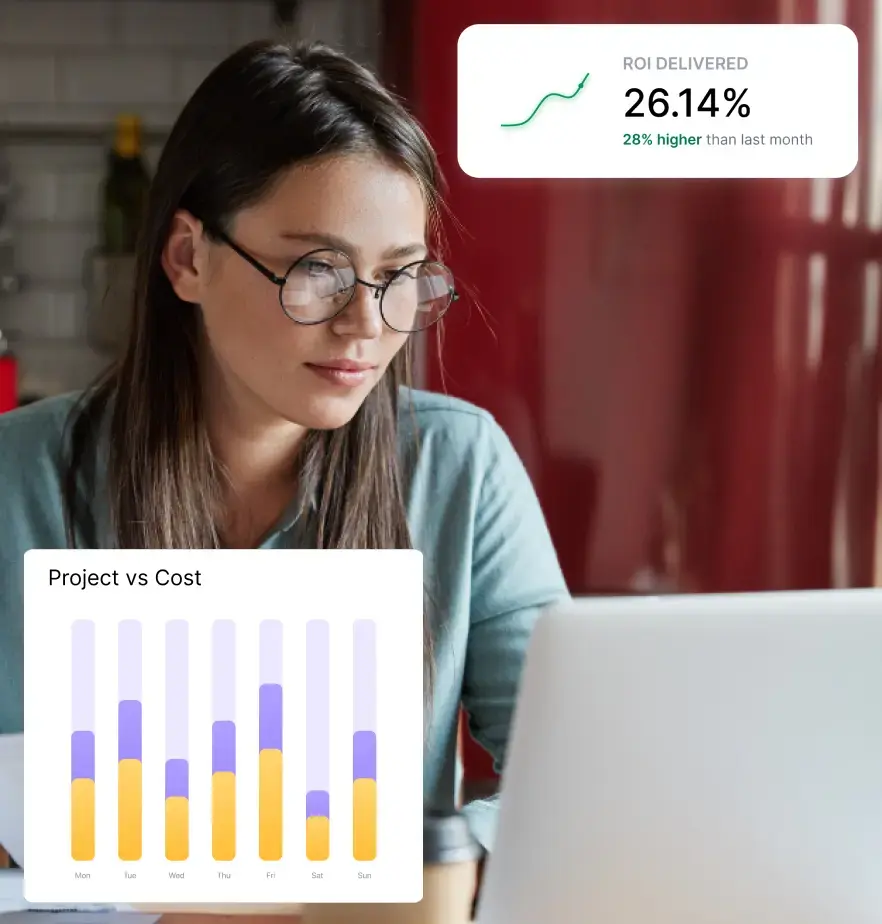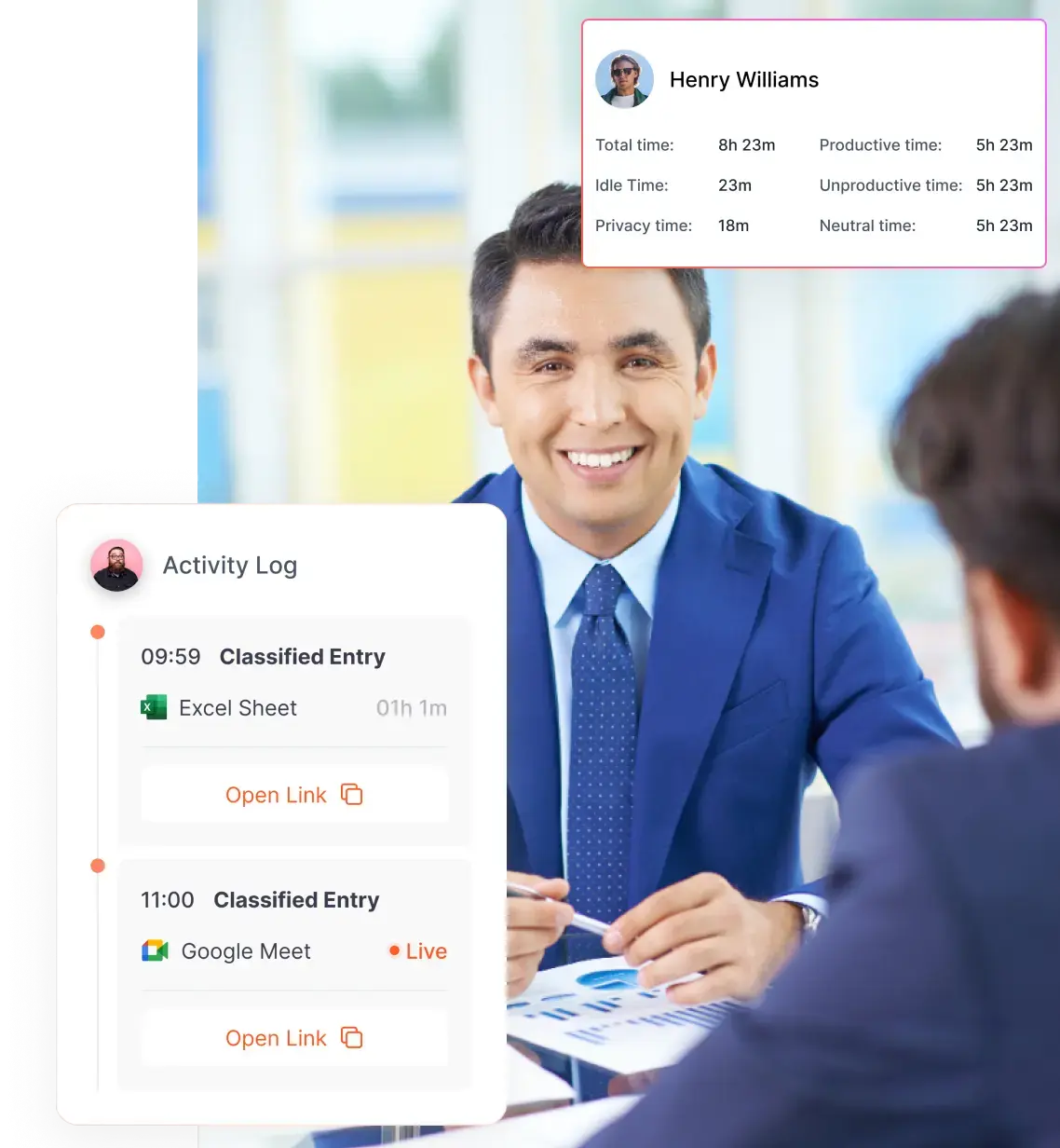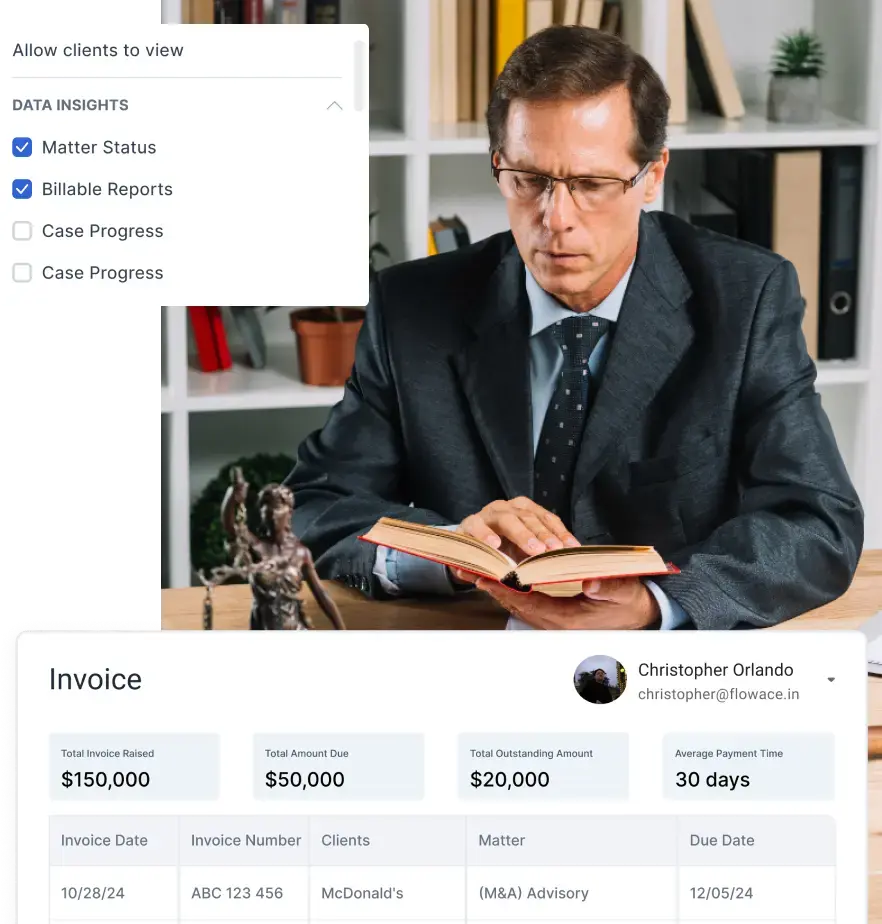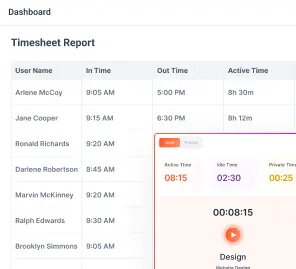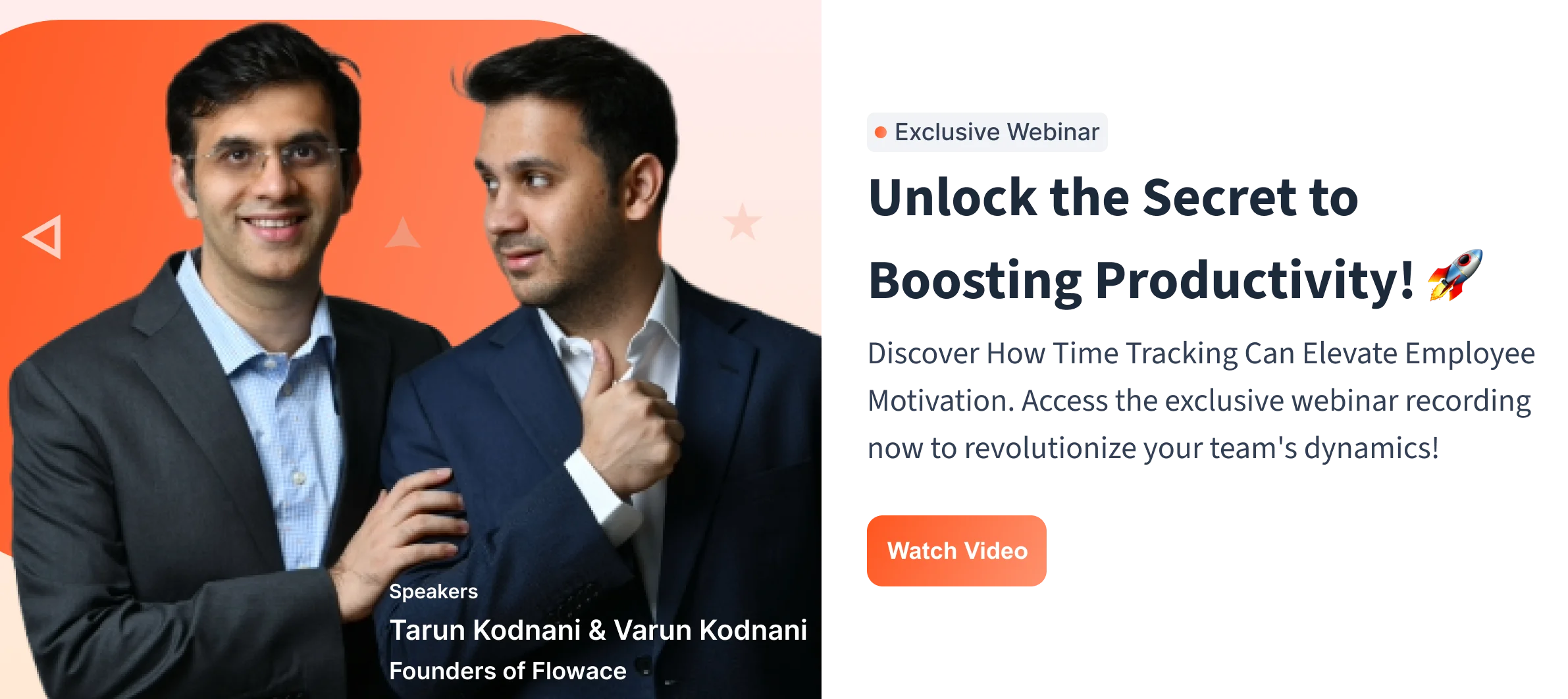The ADA protects employee medical information and requires employers to keep it confidential. Supervisors may be told only what they need to implement work restrictions or accommodations; other staff should not receive these medical details.
Employee monitoring has become pervasive in the modern workplace. And it’s only going to grow from here. The market for employee monitoring software is expected to hit $7.61 billion by 2029, with an annual growth rate of 18.1%. This surge is being driven by smarter AI-powered tools, rising cybersecurity threats, and stricter compliance demands.
That’s why it’s so important to understand employee monitoring laws. Monitoring without proper compliance can lead to hefty fines and lawsuits. If you’re an HR manager, legal advisor, business owner, or part of the compliance team, you need to know the rules.
Key Takeaways:
- The employee monitoring software market is growing fast, expected to reach $7.61 billion by 2029 due to AI tools, cybersecurity threats, and rising compliance needs.
- There’s no single federal law for employee monitoring; instead, employers must follow a mix of federal regulations like ECPA, SCA, and NLRA, along with stricter state-specific laws.
- Consent laws vary widely. Some states require only one person to consent to monitoring, while others need all parties to agree, especially for call recordings.
- California has the strongest privacy laws in the U.S. Employers must give notice, obtain consent, and allow employees to access or delete their data.
- Not all monitoring is allowed. Tracking off-duty activities, using hidden cameras, or accessing personal social media accounts can be illegal or highly restricted.
- Employers should use best practices like clear policies, employee consent, secure data storage, and transparent communication to stay compliant.
- Flowace simplifies compliance by offering features like consent prompts, privacy settings, audit trails, and ethical monitoring tools.
What Is Employee Monitoring?
Employee monitoring refers to monitoring what employees do during work hours. It is usually done through a monitoring software. There are several types of employee monitoring. It includes checking emails, logging keystrokes, recording calls, tracking website and app use or even video surveillance. Common monitoring tools range from time-tracking and screenshot software to CCTV cameras and badge entry systems.
However, employee monitoring also falls under workplace surveillance regulations and privacy laws. Hence, the scope of what an employer can or cannot monitor is limited by legal boundaries.
Is it Legal to Monitor your Employees?
In the U.S., employee monitoring is usually legal, but the rules can be tricky. Federal law—like the Electronic Communications Privacy Act—lets employers track communications if it’s for valid business purposes. However, some states, including Connecticut, Delaware, and New York, go a step further by requiring employers to give workers written notice before monitoring. Breaking these rules can lead to penalties.
Most employers today rely on employee monitoring software, which can be installed directly on an employee’s laptop or work device. These tools help managers keep track of the work happening in their team. It ensures teams stay productive and quickly spot potential problems and bottlenecks.
What Is An Employee Monitoring Software?
Employee monitoring software is a digital solution that tracks employee activities during work hours. It can monitor time spent on apps and websites, take screenshots, track attendance, tracks productivity and proved a lot of insights.
Employee monitoring software like Flowace go beyond basic tracking. They offer features like project-level time tracking, automated attendance, and real-time dashboards. It is an essential tool to manage distributed teams while staying compliant with privacy laws.
Advantages of Using Employee Monitoring Software
Used transparently, employee monitoring software offers several business benefits:
- Boosts productivity by identifying distractions.
- Improves accountability, especially for remote teams.
- Streamlines payroll with automated time tracking and timesheets.
- Enhances security and detects insider threats.
- Ensures compliance through audit trails and consent management.
- Helps prevent burnout by tracking overwork and break patterns.
Why Do Businesses Need to Monitor Their Employees?
Monitoring employees isn’t about surveillance—it’s about smarter operations.
- Track productivity and optimize performance
- Improve project delivery through task-level insights
- Ensure data security and spot risky behavior
- Meet legal and industry-specific compliance
- Support remote work accountability
Solutions like Flowace make monitoring efficient, transparent, and respectful—focusing on outcomes, not micromanagement.
What Are the Employee Monitoring Laws You Need to be Aware of?
Employee monitoring laws govern what employers can legally track. In the U.S., there’s no single law—instead, employers must follow a mix of federal rules (ECPA, SCA, NLRA) and stricter state laws.
Some states, like California and Connecticut, require employee consent or written notice. Globally, laws like GDPR mandate transparency, consent, and data protection.
Employee Monitoring Laws: The Federal Framework

Electronic Communications Privacy Act (ECPA)
The Electronic Communications Privacy Act of 1986 (ECPA) is the primary federal law governing interception of communications. It generally prohibits the intentional interception of wire, oral, or electronic communications (like phone calls, emails, instant messages) unless an exception applies.
In the workplace context, two major exceptions usually permit employer monitoring:
- Business Use Exception (Ordinary Course of Business): You’re allowed to monitor employee communications if it’s for a valid business reason and done as part of daily operations using company-provided tools. For example, you can review customer service calls for training or scan emails to check for malware.
- Consent Exception: Monitoring is also legal if one person involved gives consent. Under federal law, that can be the employee. If your team signs an ethical employee monitoring policy or sees a banner notice and continues using the system, that counts as consent.
Individuals injured by a violation can recover actual damages and statutory damages of the greater of $100 per day of violation or $10,000. Criminal penalties can reach five years’ imprisonment and fines up to $250,000.
Stored Communications Act (SCA)
The Stored Communications Act protects the privacy of communications stored on computers and networks. For example, emails or messages that are saved on a server. In general, the SCA makes it unlawful to access stored electronic communications without authorization.
However, the SCA includes exceptions relevant to employers. An employer may access communications stored on its own systems if done in line with its policies, and the employee is notified.
For example, reviewing emails sent through a company’s Microsoft Outlook server is generally permissible if employees have been told their company email is subject to monitoring.
Employers should avoid accessing employees’ personal e‑mail or messaging accounts and should include clear BYOD (bring‑your‑own‑device) policies explaining what data may be collected and requiring consent.
National Labor Relations Act (NLRA)
The National Labor Relations Act (NLRA) isn’t a privacy law, but it limits how employers can monitor workers. It protects employees’ rights to collective bargaining and “concerted activities,” such as discussing wages, working conditions, or unions, even if they aren’t union members.
Section 7 of the NLRA allows employees to join together and speak up about workplace issues. The law has also ruled that spying on employees’ personal emails or social media to see who’s discussing unions is an unfair labor practice.
In 2022, the NLRB’s General Counsel issued a memo arguing that overly invasive electronic monitoring and algorithm-based management could violate these rights. The memo also suggested that employers should be upfront about monitoring and give employees a chance to respond before using the data for discipline.
While some of these guidelines were rolled back in 2024–2025, the NLRB still keeps a close watch on how employers use surveillance tools.
So, when drafting monitoring policies, include a disclaimer that nothing in the policy is intended to restrict employees from legally protected activities.
Computer Fraud and Abuse Act (CFAA)
Under the Computer Fraud and Abuse Act, it’s unlawful to access a computer or account without permission or to go beyond the access you were given. So, the IT teams should not access personal devices or personal accounts without consent. Which means:
- Don’t use someone else’s credentials or explore systems you don’t need for your job,
- Personal devices and personal accounts are off-limits without clear, informed, written consent; don’t install monitoring or spyware on employees’ own phones or laptops.
- For BYOD, use opt-in consent that explains what’s monitored; prefer work/personal data separation instead of full-device control.
- Employer devices still require a legitimate business need and least-privilege access; log and approve admin actions.
- When access is revoked (e.g., offboarding), do not circumvent controls.
Americans with Disabilities Act (ADA)
When using monitoring tools, avoid collecting or inferring health or disability data unless it’s strictly necessary to provide a reasonable accommodation and the employee has been informed. Do not record diagnoses, medications, health-app usage, or disability-related notes.
For BYOD, configure tools to exclude health folders and personal apps. Apply least-data collection, role-based access, and clear employee notices. If accommodation information must be shared, disclose only the functional need (e.g., “no night shifts,” “ergonomic keyboard”), not the underlying condition.
Family and Medical Leave Act (FMLA)
The FMLA gives eligible employees the right to take unpaid, job-protected leave for certain family and medical reasons. Employers must keep all related medical information private and store leave records securely. Information should only be shared with staff who need it to manage schedules, accommodations, or compliance.
While employers may look into suspected abuse of FMLA leave, any surveillance should be limited, reasonable, and never used to retaliate against or discourage employees from exercising their rights.
The same confidentiality standards that apply under the ADA also apply here: supervisors should only be told what they need to know, not the underlying medical details.
Other Federal Laws
Beyond ECPA, SCA, and NLRA, several other federal laws touch on workplace monitoring:
- Anti-Discrimination Laws: You can’t monitor employees in a way that unfairly targets or singles out certain groups. If monitoring reveals sensitive information (like a health issue), you must handle it carefully to avoid violating anti-discrimination laws like the ADA.
- Privacy and Constitutional Rights: Private employees generally don’t have constitutional privacy rights at work, but public sector employees do. If you’re a government employer, your monitoring must be reasonable and not overly invasive.
- State Privacy Protections: Some states (like California) provide extra privacy rights through their constitutions. These rights can impact how private companies monitor their employees, especially around personal content.
- OSHA and Workplace Safety: Monitoring tools, especially audio or video, must not violate health and safety laws. Recording private health-related conversations could breach HIPAA or OSHA rules in certain workplaces.
- Fair Labor Standards Act (FLSA) and overtime rules: The Department of Labor increasingly scrutinizes tracking tools that measure productivity or off‑the‑clock work. Accurate timekeeping is essential when monitoring remote workers.
- FTC and EEOC guidance on AI bias: In 2023 and 2024 the Federal Trade Commission and Equal Employment Opportunity Commission warned that using AI or algorithms for hiring or productivity scoring could produce discriminatory outcomes and violate civil rights laws. Employers should audit algorithms for bias and document fairness assessments.
State and Local Requirements
U.S. states vary widely in their requirements. Some states require notice or consent before employers monitor communications; others regulate specific technologies such as biometric data or AI.They also vary widely in how they regulate employee monitoring laws, adding to the confusion caused by employee monitoring myths.
It’s essential to know the rules in each state where you operate and where your employees are located. Below, we highlight some key state-level requirements:
Notice and Consent States (Connecticut, Delaware, New York)
Only a handful of states explicitly require employers to give employees notice or obtain consent for electronic monitoring. Currently, Connecticut, Delaware, and New York are notable for their e-monitoring laws.
| State | Electronic Monitoring Notice Requirements | Consent Requirements |
| Connecticut | Must give prior written notice to employees before any electronic monitoring. Typically satisfied via a posted policy or written acknowledgement. Exceptions for investigations of wrongdoing exist. | Employee consent not explicitly required by statute (notice suffices). However, for telephone calls, Connecticut law requires all-party consent to record the call (one-party consent for in-person conversations, but all parties for calls). |
| Delaware | Must provide notice before monitoring telephone, email, internet usage of employees. Can be a one-time written notice (signed by employee) or electronic notice each use (e.g. daily logon banner). | Consent via acknowledgement of notice is effectively required (especially for one-time notice option, which must be signed). For phone calls, Delaware is an all-party consent state for recordings. |
| New York | Must give written notice at hire of monitoring of phone, email, internet, and obtain employee’s signed acknowledgment. Also must post a continuous notice in a conspicuous place. | No additional consent needed beyond the signed acknowledgment at hire. New York is a one-party consent state for call recordings (only one party needs to consent). |
| California | No general statute requiring employee monitoring disclosure. However, under the CCPA/CPRA, employers must give employees notice at collection of personal data (which can include monitoring data). Employees have rights to know, delete, etc., their personal information. | California is an all-party consent state for recording confidential conversations (Cal. Penal Code § 632) – so all parties must consent to record calls or meetings. For other monitoring, consent is recommended as part of CCPA notice and best practice. |
| Texas | No specific state law requiring notice of electronic monitoring of employees. (Employers in TX should still have a clear policy to avoid privacy tort claims.) | Texas is a one-party consent state for call recording – only one participant needs to consent (e.g. the employer can consent on its behalf). No state law mandates employee consent for general monitoring. |
(This list is not exhaustive; consult local counsel for updates.)
One-Party vs. All-Party Consent (Call Recording Laws)
When it comes to audio monitoring or recording calls, state laws diverge into two camps: one-party consent and all-party (two-party) consent. These laws aren’t specific to employment, but they critically apply when employers record telephone calls or even Zoom meetings that include audio.
| Consent Type | Description | Example |
| One-Party Consent | Only one participant in the conversation needs to consent to the recording. | An employee records a customer call after playing a message: “This call may be recorded.” |
| The recorder can be the consenting party themselves. | No explicit customer response is needed if they continue the call after the disclaimer. | |
| All-Party Consent | Everyone involved in the conversation must give clear consent before recording can take place. | A company must inform all participants and receive verbal or written agreement from everyone. |
| Recording without full consent is illegal in these jurisdictions. | Secretly recording a meeting in an all-party state may lead to fines or criminal penalties. |
If your call involves people from different states, always follow the law of the state with the strictest rules. For example, if you’re in New York (a one-party consent state) and you’re speaking to someone in California (an all-party consent state), it’s safest to get everyone’s permission before recording. California law requires all parties to agree, so it’s better to play it safe.
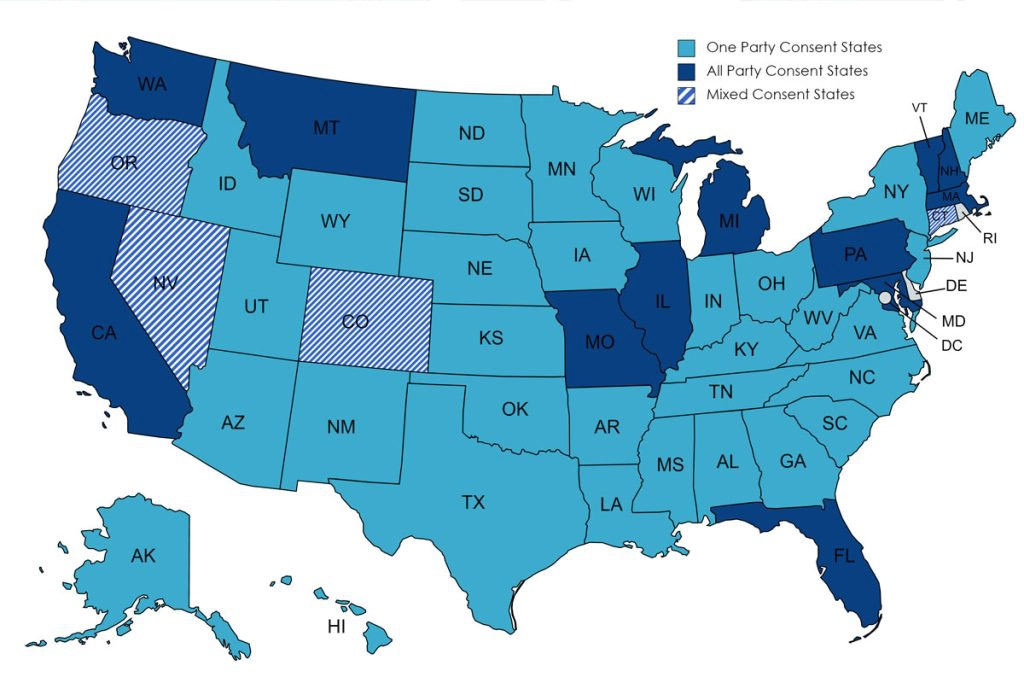
Source: recordinglaw.com
Many companies avoid legal trouble by simply letting everyone know the call is being recorded, no matter where they’re located. It’s a smart and respectful habit to build.
California Privacy Laws (CCPA, CPRA, CalECPA)
California deserves special mention not only because of its all-party consent rule for recordings, but because it has some of the most robust privacy protections in the U.S.
| Law / Regulation | Scope | Employer Obligations | Employee Rights |
| CCPA & CPRA
(California Consumer Privacy Act & California Privacy Rights Act) |
Applies to businesses with $25M+ revenue or those handling large volumes of personal data. | – Provide notice at time of data collection
– Disclose categories of data collected and purposes – Ensure reasonable data security – Monitor only with proper notice |
– Right to know, access, and delete data
– Right to opt-out of certain data uses – Right to sue for security breaches of sensitive data |
| CalECPA
(California Electronic Communications Privacy Act) |
Restricts government access to electronic communication data. | – Not directly applicable to private employers
– Government employers cannot compel access to personal accounts without legal process |
– Protection from government intrusion into personal digital communications (relevant for public employees) |
| California Labor Code § 980
(Social Media Privacy) |
Regulates employer access to employees’ personal social media accounts. | – Cannot request or demand social media login credentials
– Cannot retaliate against employees for refusal |
– Right to maintain privacy of personal social media
– Freedom from employer coercion to share login info |
| Biometric Data & Surveillance Guidelines | Covers biometric data under CPRA’s “sensitive personal information” category. | – Provide explicit notice and obtain consent before collecting biometric data
– Avoid punitive action based on off-duty behavior unless job-related |
– Right to informed consent for biometric data
– Protection from wrongful termination based on off-duty monitoring |
California’s employee monitoring laws emphasize employee privacy rights and consent. So, California employers should be extremely transparent and cautious with any form of monitoring.
Other Notable State Laws (Texas, Washington, and Emerging Regulations)
Beyond the states already discussed, a few other state laws and trends deserve attention:
| State / Law | Key Requirements | Employer Takeaways |
| Texas
CUBI Act |
Consent required before collecting biometric data (e.g. fingerprints). | Use signed consent forms for biometric time clocks. |
| GPS tracking without consent is a misdemeanor (except on company-owned vehicles). | Notify employees even if tracking company vehicles. | |
| One-party consent state for call recording. | OK to record calls internally, but check other states’ laws for interstate calls. | |
| Washington
Wiretap Law (RCW 9.73) |
All-party consent required for recording calls or conversations. | Must get full consent before recording any workplace audio. |
| No general monitoring law, but strong privacy culture. | Transparency is key — disclose monitoring policies to employees. | |
| Seattle mandates ride-share firms disclose monitoring to drivers. | Watch for city-level rules, especially in metro areas. | |
| Illinois
BIPA |
Written notice, policy, and consent required for biometric data use. | Strictest U.S. biometric law — no compliance means lawsuits. |
| Non-compliance can result in large fines and lawsuits. | Never collect biometric data without full compliance. | |
| Emerging Trends
Nationwide Shift |
Maryland requires notice if AI is used to monitor workers (Oct 2022). | Disclose any AI-based monitoring clearly and early. |
| Colorado, NJ, MA, PA exploring new workplace privacy rules. | Regularly check for legal updates in your state. | |
| NLRB may limit excessive surveillance at the federal level. | Avoid intrusive or hidden monitoring practices. |
Another important law to notice is the City ordinances. A few large cities have considered rules around electronic monitoring. For instance, New York City has an AI hiring law (requiring bias audits of automated decision tools) which, while not a monitoring law, shows cities’ interest in regulating workplace tech.
The Penalties: What Happens If You Violate these Employee Monitoring Laws?
Understanding the risks of non-compliance is as important as knowing these employee monitoring laws. Penalties depend on the law and the state where monitoring takes place.
Federal laws:
-
ECPA/SCA: Employees can claim damages, with minimum awards starting at $10,000 or $100 per day. Willful violations may also bring criminal fines or jail time.
-
NLRA: Employers may be charged with unfair labor practices, ordered to stop surveillance, or required to reinstate affected workers.
-
CFAA: Accessing systems without proper authorization can lead to fines up to $250,000 for individuals, $500,000 for organizations, and prison sentences of up to 10 years.
State laws:
-
New York: $500 for the first violation; $1,000 for repeat offenses.
-
Connecticut: $500–$3,000 per violation.
-
Delaware: $100 per violation.
-
California (CCPA/CPRA): $2,500 per unintentional violation; $7,500 if intentional.
-
Illinois (BIPA): $1,000–$5,000 per violation, often resulting in costly class-action settlements.
Civil liability:
In addition to government penalties, employees may sue for invasion of privacy, breach of contract, or wrongful termination. Biometric and data privacy claims are especially common and expensive.
Recent Legal Developments (2024–2025)
Employee monitoring laws are evolving quickly, especially with the rise of AI and remote work.
-
AI and algorithmic bias: The NLRB has raised concerns that electronic surveillance and algorithm-driven management could interfere with employee rights under Section 7. While some earlier guidance was rolled back in 2024, the Board continues to scrutinize how monitoring data is used and stresses the importance of transparency.
-
AI disclosure laws: States are beginning to regulate AI in the workplace. Maryland now requires consent for AI tools like facial recognition during hiring. Illinois is considering similar disclosure rules for AI-driven applicant screening, with California and New York exploring comparable bills.
-
Biometric data: States such as Texas, California, and Colorado are looking at biometric privacy laws modeled on Illinois’ BIPA, which requires written consent and allows high statutory damages.
-
Remote work monitoring: Employers are expected to include clear, written monitoring policies for remote employees. While California law doesn’t directly regulate this area, it still provides strong protections for personal data.
-
Federal oversight: The Department of Labor is examining whether monitoring tools contribute to overtime violations. The EEOC has issued guidance on algorithmic bias, and Congress is considering updates to the ECPA and CFAA to better balance security and privacy.
-
Global influence: International standards like Europe’s GDPR and Canada’s PIPEDA require a lawful basis for processing employee data. These laws, along with California’s CCPA, have reshaped expectations around data privacy. U.S. companies with EU workers must comply with GDPR requirements.
This reflects a growing trend: stronger protections for employee privacy, greater transparency, and more regulation of AI and biometric monitoring.
Industry‑Specific Employee Monitoring Laws
Some industries face stricter monitoring rules because of the sensitive data they handle. In these sectors, employee monitoring must balance productivity and security with strict privacy obligations.
Healthcare (HIPAA)
The HIPAA Privacy Rule protects patient health information (PHI). Monitoring tools must never access medical records unless authorized. Access should be logged, and only approved staff can view PHI.
The HIPAA Security Rule requires safeguards and tracking of all PHI access. If using screen capture or keylogging tools in medical settings, configure them to hide PHI and train staff on compliance.
Financial Services
-
Sarbanes–Oxley Act (SOX): Public companies must keep accurate records and retain them for at least seven years. Monitoring systems should preserve audit trails in a tamper-proof way.
-
FINRA Rules: Broker-dealers must archive certain communications (emails, instant messages, calls) for three years.
-
PCI-DSS: Businesses handling payment cards must track and log all access to cardholder data, review logs daily, and assign unique user IDs for accountability.
Government Contractors
-
FISMA: Federal agencies and contractors must use continuous monitoring and follow NIST standards to secure federal information systems.
-
Export-Controlled Data (ITAR/EAR): Defense and aerospace contractors must ensure only authorized staff access sensitive data.
Types of Employee Monitoring & its Legal Limits
Employee monitoring can take many forms. It’s important to understand the legal limits and employee monitoring best practices for each type, as laws and expectations can differ for each one.
| Type of Monitoring | What’s Allowed | What to Avoid |
|---|---|---|
| Computer & Network | Track emails, websites, keystrokes, downloads on company devices if disclosed in policy. | Accessing personal accounts or collecting more data than necessary without consent. |
| Phone & Call Recording | Monitor business calls; record calls with proper notice under federal/state consent laws. | Recording personal conversations or failing to inform employees/customers. |
| Video Surveillance | Use cameras in public work areas; video (without audio) preferred; post clear notices. | Placing cameras in private spaces like restrooms or changing rooms; recording audio. |
| GPS & Location Tracking | Track company vehicles/devices during work hours; requires written consent for personal devices. | Monitoring off-duty activity or tracking without consent. |
| Social Media & Accounts | Review public content or work-related posts; use cautiously for background checks. | Asking for passwords, accessing private accounts, or acting on protected speech/off-duty conduct. |
Best Practices for Compliance & Ethics
Creating a legally compliant employee monitoring program requires clear policies and transparent communication. Some of the best practices to implement are:
- Drafting Clear Policies: Create a straightforward monitoring policy that lists what will be tracked, how, and why. Explain privacy boundaries, outline data retention, and reassure employees that it aligns with legal standards.
- Obtaining Consent: Get clear, written consent from employees. Use signed forms or electronic acknowledgments, especially in states that require explicit approval.
- Minimizing Intrusiveness: Only monitor what’s necessary for business goals. Avoid tracking outside work hours or personal areas, and review if certain monitoring can be reduced or removed.
- Employee Communication & Training: Explain monitoring during onboarding and in regular updates. Create open channels for questions and reinforce how monitoring protects both the company and the team.
- Data Security & Retention: Store monitoring data securely with limited access. Use audit trails, define how long data is retained, and make sure it’s only used for legitimate purposes.
Compliance Checklist
Below is a practical checklist to help organizations implement lawful and ethical monitoring programs.
Before Implementation:
-
Review federal, state, and industry laws (ECPA, HIPAA, SOX, PCI-DSS, etc.).
-
Draft a clear monitoring policy explaining purpose, scope, retention, BYOD rules, and employee rights.
-
Consult legal counsel to confirm compliance.
During Implementation:
-
Give employees written notice and get consent where required (e.g., NY, CT, DE, biometric laws).
-
Train managers on legal limits and confidentiality requirements.
-
Configure monitoring tools to capture only necessary business data, not personal or medical details.
-
Keep records of notices, consents, and retention schedules.
Ongoing Compliance:
-
Update policies to reflect new AI, biometric, or privacy laws.
-
Audit systems for fairness and check algorithms for bias.
-
Provide channels for employees to raise concerns or correct errors.
-
Secure data with encryption, updates, and strict access controls.
This approach helps organizations monitor responsibly while staying compliant with legal and ethical standards.
Compliance Doesn’t Have to Be Hard – Flowace Has You Covered
Implementing all these compliance steps might sound daunting. Especially if you are a busy HR or managing an IT team. This is where Flowace can help.
Flowace is an AI-powered employee productivity and time-tracking solution – and it’s built with compliance and transparency in mind, so you can monitor work efficiently while respecting privacy and legal requirements.
How can Flowace support your employee monitoring compliance?
- Built-In Consent & Notifications: Flowace displays custom consent prompts during onboarding and logs user acceptance, helping you meet legal notice and consent requirements in states like Connecticut, Delaware, and New York.
- Customizable Privacy Settings: You can control what gets monitored based on local laws, disable features like screenshots in stricter states, and set “no-monitoring” hours to protect employee privacy during off-duty times.
- Data Security & Retention by Design: Flowace encrypts all data, restricts admin access, and lets you set automatic deletion timelines to stay compliant with data minimization and retention laws.
- Consent for Remote Work Monitoring: Flowace allows remote workers to view their own tracking data, promoting transparency and trust, while also logging break times and paused sessions for accountability.
- Compliance Reports and Audit Trails: The platform provides audit logs and downloadable reports to prove consent, data handling, and retention compliance in case of legal reviews or audits.
- Policy Integration: Flowace can display real-time reminders for workplace policies, such as USB usage restrictions, making it easier for employees to follow rules without feeling micromanaged.
- Ethical Monitoring by Default: Flowace avoids invasive tactics and focuses on productivity metrics and workflow insights, reinforcing that monitoring is meant to support employees.
Final Thoughts
To sum it up, employee monitoring laws are a shield to protect employee privacy and not an obstacle to monitoring.
By staying informed and honest with your team, you avoid legal trouble and build trust. When people know what’s being tracked and why, they’re more likely to support it. Monitoring doesn’t have to feel like spying. Done right, it can actually make your workplace stronger.
Don’t risk legal trouble. See how Flowace keeps you compliant and in control. Book a free demo with Flowace now.
FAQs
1. Is employee monitoring legal in India?
Yes, employee monitoring is legal in India, provided it adheres to certain conditions. The monitoring must respect an employee’s right to privacy, follow principles of proportionality and necessity, and be carried out with transparency and legitimate business interest. Consent, either implicit or explicit, plays a crucial role in determining legality.
2. What types of monitoring are legally acceptable for employees?
Monitoring activities such as tracking attendance, internet usage, emails, application usage, and work-related screen activity are generally acceptable, especially when conducted on company-owned devices. However, these practices should be justified by business needs, proportionate in scope, and ideally covered under an employment contract or company policy.
3. Is it legal to monitor employees’ devices?
Monitoring company-owned devices is legal in most cases, especially if employees have been informed beforehand. However, monitoring personal devices (BYOD) used for work is a sensitive area. It typically requires clear consent and well-defined boundaries to avoid infringing on personal privacy.
4. Can employers legally use GPS to monitor employees?
Yes, employers can use GPS tracking on company-owned devices or vehicles for purposes like route optimization, attendance validation, or field activity tracking. However, GPS monitoring should be reasonable, limited to work hours, and communicated clearly to the employee.
5. Is it legal to track and monitor employee calls?
Monitoring business calls made on company-owned systems is generally permissible, particularly when used for quality control, training, or compliance. However, listening to personal calls or recording calls without informing employees may breach privacy laws and should be avoided.
6. Are employees’ personal devices legally trackable?
Tracking personal devices is legally risky and typically not recommended unless the employee has provided informed and voluntary consent. Even with consent, monitoring should be restricted to work-related activity and done through secure, privacy-compliant tools.
7. Is it necessary to inform employees about monitoring activities?
Yes, transparency is critical. Employers must inform employees about the nature, scope, and purpose of any monitoring practices. This can be done through employment contracts, onboarding policies, or internal communication. Lack of disclosure can lead to legal complications and erode employee trust.
8. How important is a moonlighting policy in employee monitoring?
A clearly defined moonlighting policy helps organizations manage conflicts of interest and productivity risks. While monitoring tools may reveal secondary employment activity, having a policy in place sets expectations, clarifies consequences, and strengthens the legal grounds for action if violations occur.
9. What are the legal considerations for monitoring employee internet usage?
Monitoring internet activity is legal if it’s confined to business purposes and carried out on company networks or devices. Employers must ensure that monitoring is not overly invasive and that employees are aware their internet activity may be tracked. This helps balance productivity goals with privacy rights.
10. Are there any restrictions on monitoring employee emails legally?
Employers can monitor work email accounts to prevent data breaches, ensure compliance, and track productivity. However, monitoring should be limited to professional communication and clearly stated in the company’s IT or communication policy. Monitoring personal emails—even if accessed on work systems—can lead to legal challenges.
Related Articles
- Employee Monitoring: Complete Guide 2025
- How to Choose Employee Monitoring Software
- 9 Ways Employees Fool Monitoring Software
- Employee Monitoring Data Protection Guide
- How Employee Monitoring Software Works & Matters
- Remote Team Monitoring: Perspectives & Insights
- Employee Monitoring Statistics 2025
- Performance Monitoring: Benefits & Concerns
- Employee Monitoring Myths Debunked
- Employee Wellbeing Monitoring Solutions
- Create Ethical Employee Monitoring Policy
What is Employee Task Tracking? Complete Guide - Best Employee Monitoring Software 2025
- Employee Idle Time Tracking Software Guide
- Employee Monitoring Best Practices 2025








